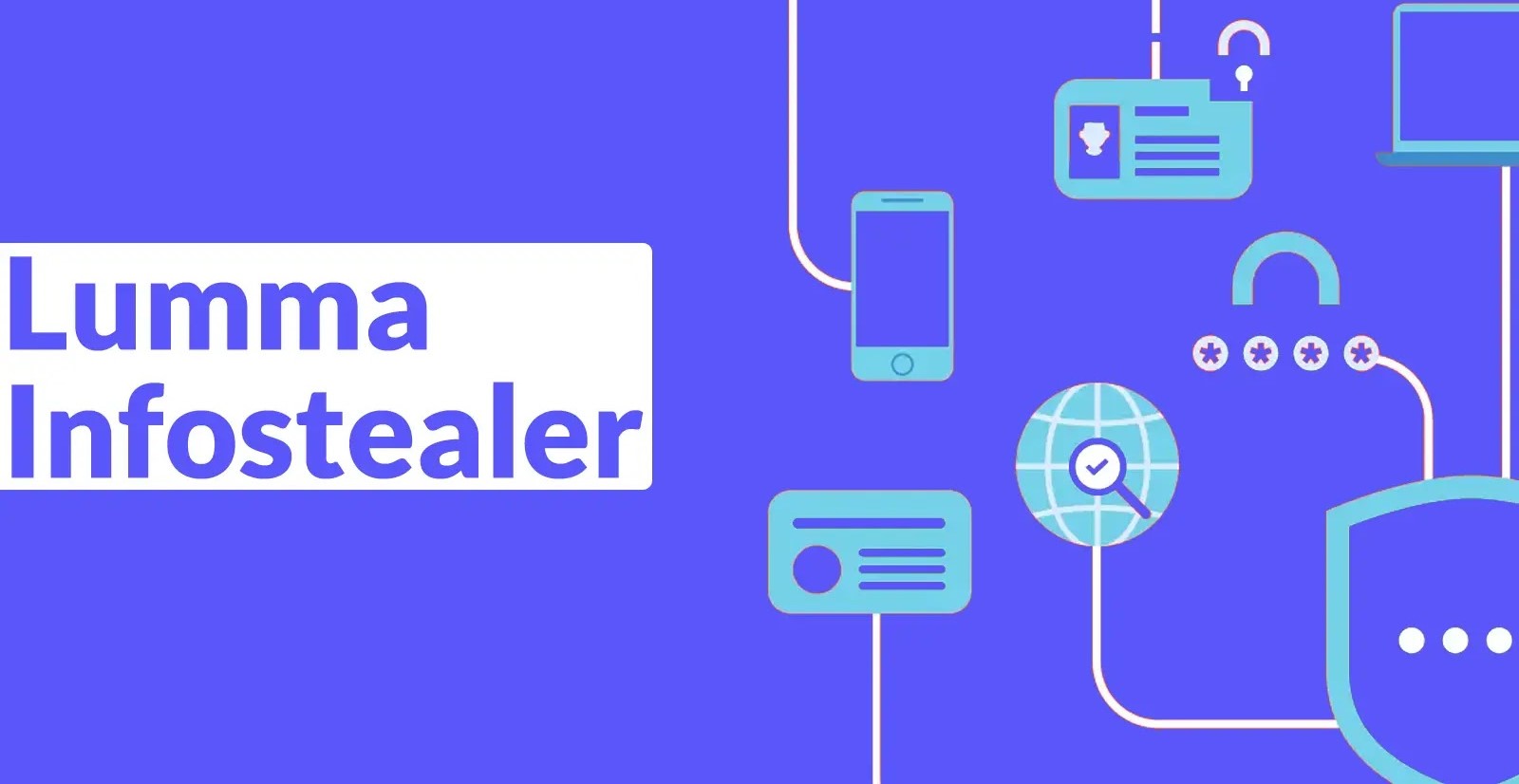
Lumma Infostealer Steal All Data Stored in Browsers and Selling Them in Underground Markets as Logs
The Lumma Infostealer: Unmasking a Persistent Browser Data Threat
In the evolving threat landscape, information stealers remain a primary concern for cybersecurity professionals and everyday users alike. Among the most pervasive and dangerous variants currently active is the Lumma Infostealer. This malware family has demonstrated a remarkable ability to systematically exfiltrate vast quantities of sensitive data from infected systems, precisely targeting critical information stored within web browsers. Understanding its operational mechanics and impact is essential for effective defense.
What is the Lumma Infostealer?
The Lumma Infostealer is a sophisticated malicious software designed to harvest sensitive user data. Unlike some malware that focuses on a single type of exploit, Lumma is an all-encompassing threat, diligently collecting a wide array of information from compromised machines. Its primary focus, as highlighted by recent analyses, is the rich cache of data residing within web browsers.
Cybersecurity News, among other sources, has reported on Lumma’s capabilities, underscoring its role in targeting both consumer and enterprise environments. This broad reach makes it a significant threat to personal privacy and corporate security.
Data Targeted and Exfiltration Methods
Lumma’s modus operandi involves systematically scanning for and extracting valuable information stored within popular web browsers. The scope of data it targets is extensive, including but not limited to:
- Login Credentials: Stored usernames and passwords for websites and online services.
- Cryptocurrency Wallet Information: Seed phrases, private keys, or wallet files used for managing digital assets.
- Personally Identifiable Information (PII): Any data that can be used to identify a specific individual.
- Session Tokens: Information that allows attackers to hijack active user sessions without needing passwords.
- Browser History and Cookies: Details about user browsing habits and persistent session data.
- Credit Card Details: Saved payment information from online shopping or banking sites.
Once harvested, this sensitive data is then compiled into “logs.” These logs, which are essentially compressed archives of stolen information, are subsequently sold in underground markets. These illicit marketplaces serve as a hub for cybercriminals to purchase and exploit this compromised data for various nefarious purposes, including financial fraud, identity theft, and further targeted attacks.
Impact on Individuals and Organizations
The consequences of a Lumma Infostealer infection can be severe for both individuals and organizations:
- Financial Loss: Direct theft from bank accounts, cryptocurrency wallets, or fraudulent purchases using stolen credit card details.
- Identity Theft: Stolen PII can be used to open fraudulent accounts, obtain loans, or impersonate victims.
- Account Takeover: Stolen login credentials and session tokens enable attackers to gain control of online accounts, leading to data breaches and reputational damage.
- Corporate Espionage: For businesses, stolen credentials or sensitive information can lead to intellectual property theft, compromise of competitive advantage, or disruption of operations.
- Ransom and Extortion: In some cases, stolen data can be used as leverage for extortion.
The sale of these data logs on dark web marketplaces creates an enduring risk, as the information can be perpetually traded and misused by various threat actors over time.
Remediation Actions and Prevention Strategies
Mitigating the threat posed by the Lumma Infostealer requires a multi-layered approach focusing on prevention, detection, and rapid response. While no specific CVEs are typically assigned directly to infostealers as standalone vulnerabilities (they often exploit other vulnerabilities or rely on social engineering), the remediation actions address the vectors and effects of such malware.
Individual Users:
- Practice Strong Password Hygiene: Use unique, complex passwords for all online accounts. Consider a reputable password manager to securely store and generate these.
- Enable Multi-Factor Authentication (MFA): Activate MFA wherever possible, especially for critical accounts like email, banking, and social media. This adds a crucial layer of security, even if credentials are stolen.
- Be Wary of Phishing and Social Engineering: Exercise extreme caution with suspicious emails, links, or unsolicited messages. Lumma often spreads through deceptive means.
- Keep Software Updated: Regularly update your operating system, web browsers, and all applications. Software updates often include security patches for known vulnerabilities.
- Use Reputable Antivirus/Anti-Malware Software: Keep your security software updated and perform regular scans to detect and remove threats.
- Backup Critical Data: Regularly back up important files to an external hard drive or cloud service to ensure data recovery in case of infection.
Organizations:
- Implement Endpoint Detection and Response (EDR) Solutions: EDR tools can help detect suspicious activities indicative of infostealer infections in real-time.
- Conduct Regular Security Awareness Training: Educate employees about phishing, social engineering, and the risks of downloading files from untrusted sources.
- Apply Principle of Least Privilege: Limit user access rights to only what is necessary for their role to minimize the impact of a compromised account.
- Network Segmentation: Segment networks to contain potential breaches and limit lateral movement of malware.
- Regular Vulnerability Assessments and Penetration Testing: Identify and address security weaknesses in your infrastructure.
- Monitor Network Traffic for Anomalies: Look for unusual outbound connections or large data transfers that could indicate exfiltration.
Tools for Detection and Mitigation
| Tool Name | Purpose | Link |
|---|---|---|
| Endpoint Detection and Response (EDR) Solutions (e.g., CrowdStrike Falcon, SentinelOne) | Real-time threat detection, investigation, and response on endpoints. | CrowdStrike / SentinelOne |
| Next-Generation Antivirus (NGAV) (e.g., Microsoft Defender for Endpoint, Sophos Intercept X) | Proactive protection against malware, including infostealers. | Microsoft / Sophos |
| Network Intrusion Detection/Prevention Systems (NIDS/NIPS) (e.g., Suricata, Snort) | Monitor and analyze network traffic for malicious activity and exfiltration attempts. | Suricata / Snort |
| Password Managers (e.g., LastPass, 1Password, Bitwarden) | Securely store and generate strong, unique passwords. | LastPass / 1Password / Bitwarden |
| Browser Security Extensions (e.g., uBlock Origin, Privacy Badger) | Block malicious scripts, ads, and trackers that may aid in malware delivery. | uBlock Origin / Privacy Badger |
Conclusion
The Lumma Infostealer represents a persistent and dangerous threat to digital security, leveraging sophisticated techniques to compromise and exfiltrate sensitive data from web browsers. As a primary source of information for individuals and organizations, browser data offers a lucrative target for cybercriminals seeking to profit from stolen credentials, financial details, and personal information. Effective defense against such threats hinges on a proactive and multi-faceted security posture. Implementing robust security measures, staying vigilant against social engineering tactics, and continuously updating security practices are crucial steps in protecting against the pervasive dangers posed by infostealers like Lumma.





